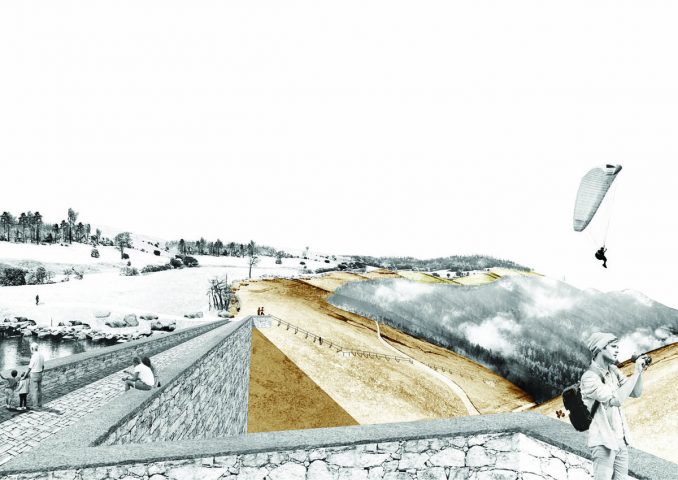
A Fire-Scape presents a new perspective on fire as a landscape component in the forests of North America. Climate change means that fire will become a more prominent feature of the landscape in the future. In view of this change, landscape architects have a major part to play in designing new resilient landscapes and preparing for a life with fire. Fire has always been a key component of the natural process in forests across North America. The Native Americans used to start fires deliberately. These controlled burns contributed to the openness of the landscape, making it easier for them to hunt and gather food. It was an ‘untouched’ wilderness, a mosaic of grasslands and forests produced by these sporadic burns.
With the arrival of the colonists in 1850 and the construction of houses, roads and railways, the fire was no longer desirable as a component of these forests. Following decades of firefighting and fire prevention programs, the ecosystems in these forests have changed drastically, creating dense tree stocks with little diversity. This, in combination with climate change, is resulting in extreme forest fires. In California, houses are being built in or near forests that are susceptible to fires. This means that it is threatening our lives and has literally become a hot news topic.
So programs focused on protecting the built environment against fire have the opposite effect. What if there is a different approach? In the Netherlands, we have been defending ourselves against the water for centuries by building dykes, sea walls and dunes. Now, new ideas are being tested that make room for the water instead. This strategy leads to new landscapes and new forms of resilience. Can the fire problem in California be tackled in a comparable way? This could mean designing with fire instead of fighting it, if the landscape there is to be restored.
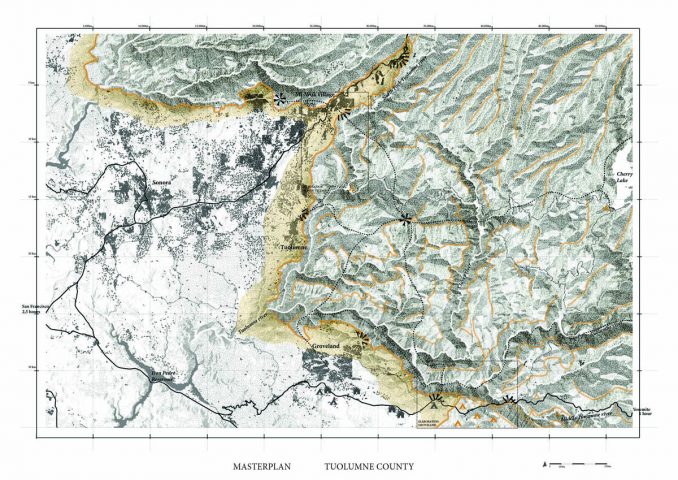
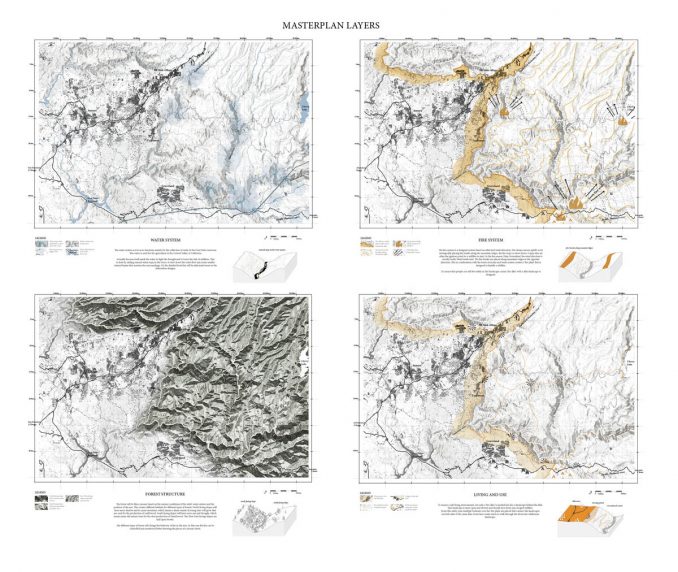
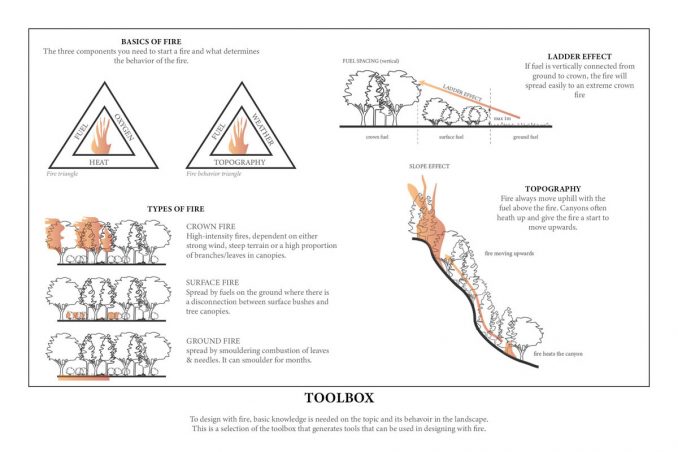
This project presents a strategy for a regional approach in the forests of the Sierra Nevada Mountain range in California. This approach was inspired by the outlook of the Native Americans, by the research into fire in the landscape, resulting in a toolbox, and by the Dutch approach to the water problem. It reintroduces a productive fire landscape or ‘fire-scape’ that can support timber production, creating an economic platform and a modified mosaic landscape where fire is part of the ecological process.
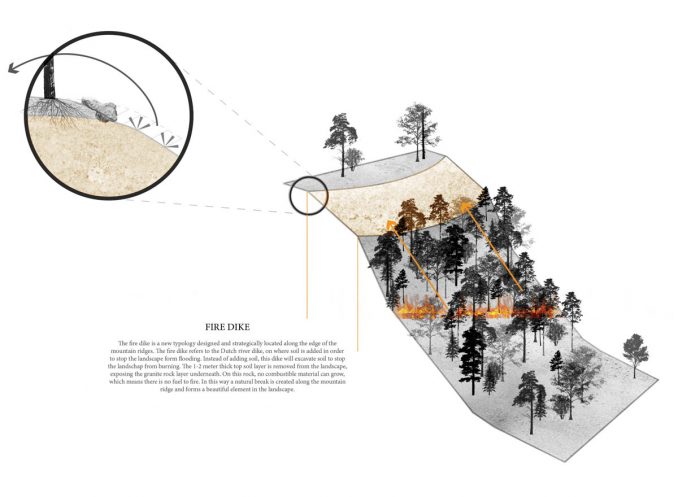
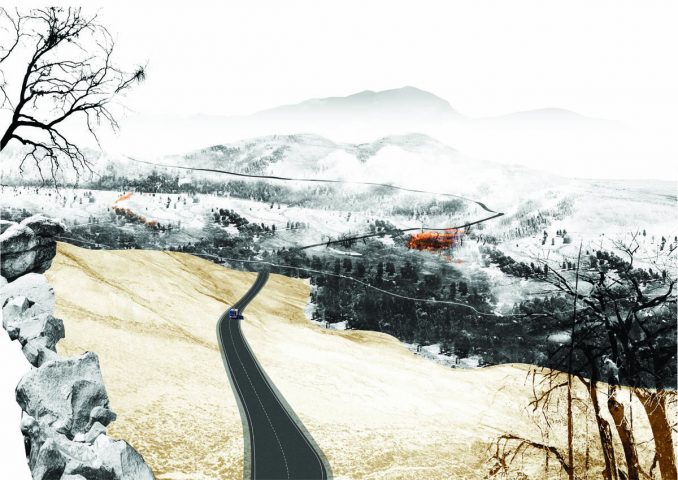
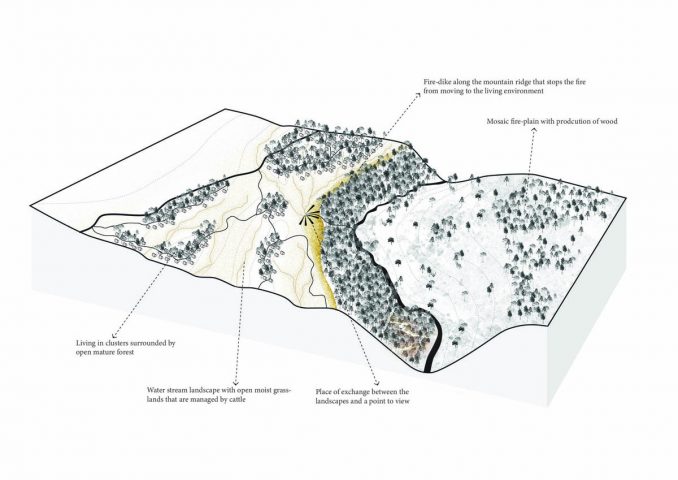
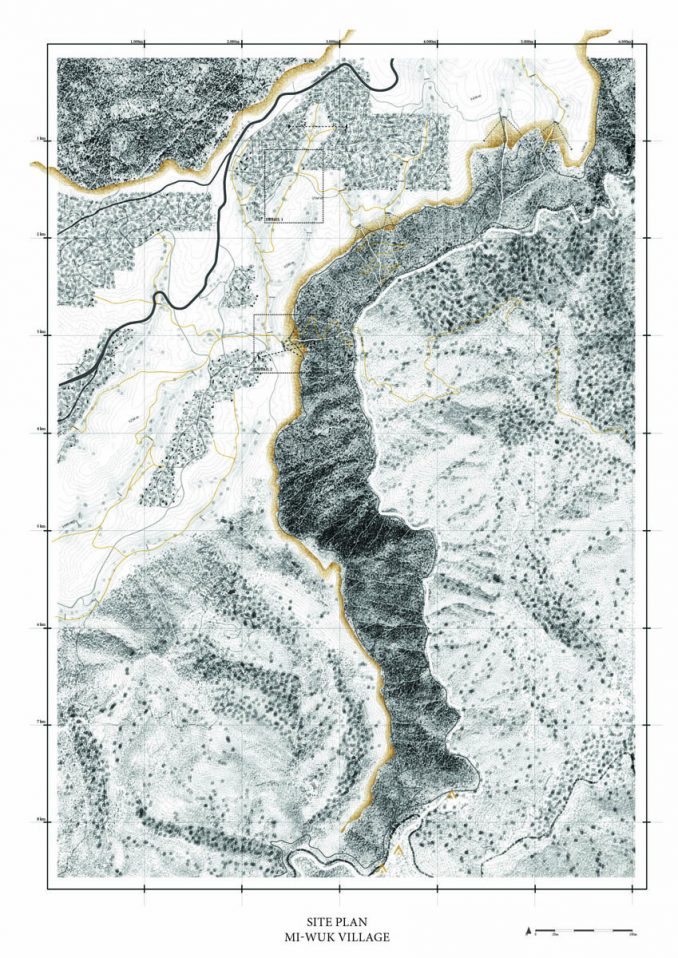
So-called fire dykes have been designed to ensure a safe living environment. The one- to two-meter-thick layer of topsoil has been removed, exposing the granite rock. This prevents combustible material from growing there and acts as a barrier to fires in the fire landscape. Besides its preventive qualities, the fire dyke is a beautiful addition to the landscape at the border between safe and unsafe, as well as a vantage point from where to enjoy the excitement of fire.
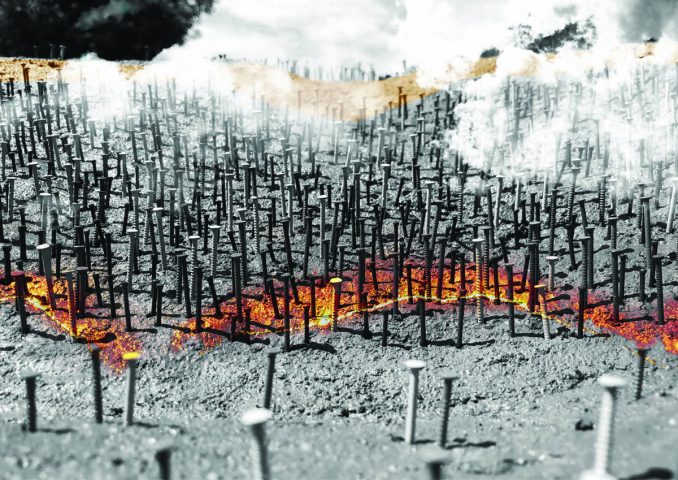
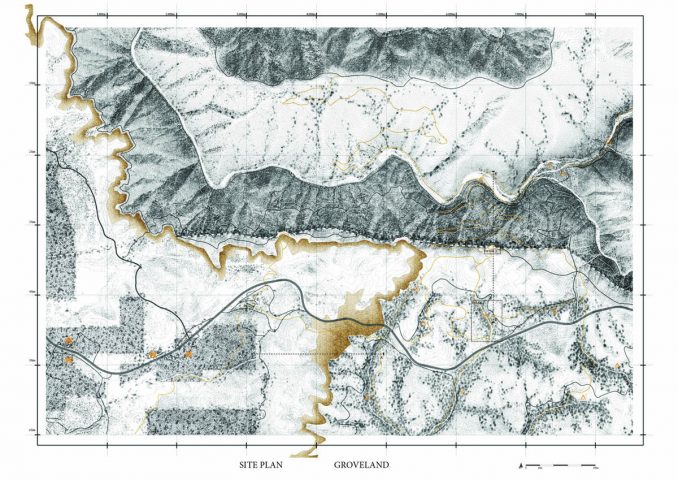
Student Project | A Fire-Scape | Hanna Prinssen
Student Name: Hanna Prinssen
Project Name: A Fire Scape
School: Academy of Architecture Amsterdam
Advisor: Yttje Feddes
